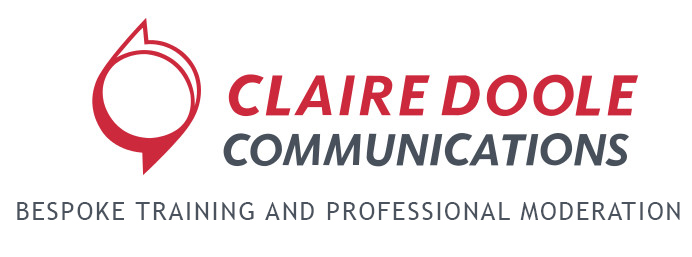
by Claire Doole | May 30, 2021 | Blog, Moderating
Have you seen the play, “Six Characters in search of an Author” by the Italian dramatist, Luigi Pirandello? Actors rehearsing for a play are interrupted by six unfinished characters in search of an author to finalise their story. It was first performed in 1921 and is part of the absurdist genre – breaking down the barriers between fantasy and reality.
Unfortunately, a century later, it is the absurd reality that many moderators can find themselves in when confronted with a cast of speakers selected by the organisers of an event. We struggle to work out why they have been chosen, and what they bring to the subject under discussion. We are then left to build connections between the speakers to create a narrative flow that makes sense to the audience.
Believe me, this can take hours of head scratching and sometimes the connections are just not there, particularly if an organiser has selected someone for non-editorial reasons such as an important donor, someone they want to do business or engage with in the future or because we must have a representative from all five corners of the globe.
Start with the what and not the who
Organisers often tell me they want a BBC-style discussion. If that is the case, they need to follow the principles of BBC news and current affairs programmes. You start with identifying the news of the moment – for event organizers – this translates as what is top of mind and relevant for the audience.
A lot of events today are focusing on building back better after the pandemic, asking if the world can be more sustainable. The BBC would take an opposing view structure bringing someone from the government to explain how they set new environmental targets to achieve net-zero emissions, and then an environmental activist who says the targets are inadequate. The BBC might also put into the mix an academic who can give context.
Unfortunately, organisers rarely want to have opposing views in a discussion – although this is often what is most interesting to an audience. They often prefer to have different perspectives on a subject. This is also possible but it takes more careful thought.
You need to come up with a title for the panel which ideally includes a question. For example, tea producers under threat – how to ensure production is environmentally, economically and socially sustainable? You could then invite a speaker from India and from Kenya to talk about the threats and possible solutions, before bringing in a speaker from a tea consuming nation, such as the UK, and a speaker from the FAO to discuss possible actions at local, regional and international level.
Be selective in choosing your panel speakers
If you want a real exchange of views, you need to select speakers who can not only speak about their area but pick up on points raised by other speakers or the moderator, and don’t have more than four speakers. All too often, panel discussions are in name only as they become interviews with each speaker and there is little exchange between the speakers.
One more point, do not accept the first speaker you contact. At the BBC programme producers hit the phones finding the right people for the subject and dismissing anyone who does not have strong views, new insights or who is not a confident speaker.
And they never accept people who all say the same thing. Imagine if Pirandello’s six characters in search of an author were all the same – that would have been mind numbing for the audience who would no doubt have voted with their feet and the play would not have endured as a hit show over the past century.
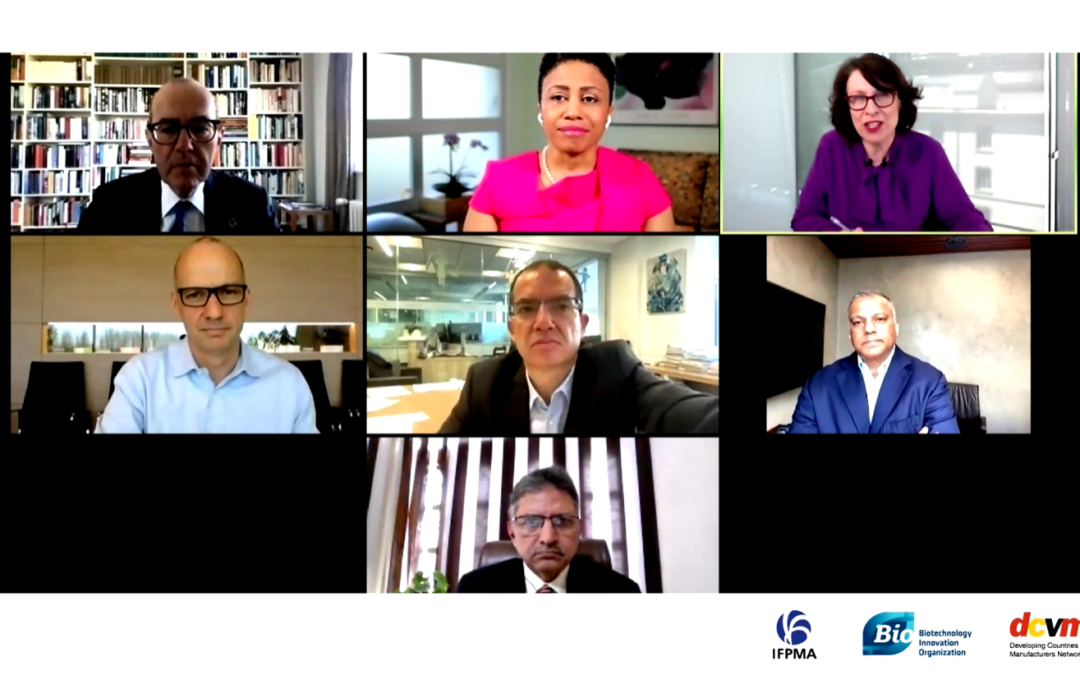
by Claire Doole | Apr 25, 2021 | Blog, Media training
Organising a virtual press briefing is to coin the Thai-English phrase – “same same but different.
The basics are the same. You need to have news, which is impactful, timely and ideally topical. It may seem obvious, but too often press briefings are organised solely to “educate” the media about an issue. I can’t tell you how many I left as a BBC Foreign Correspondent without a story to broadcast!
But there are many differences; while virtual briefings have many advantages notably cost, convenience, geographic reach and you could argue carbon footprint, as with all digital events they need to better prepared and moderated.
For the past year I have been moderating virtual media briefings for the International Federation of Pharmaceutical Manufacturers Associations on COVID 19 – last week was my 6th – and also advising companies and organisations on how to run and speak at them.
Preparing a virtual press briefing
Based on my experience on both sides of the fence as a moderator/media consultant/trainer and former journalist, here are four key questions you should ask yourself:
Hybrid or virtual? – Hybrid where the moderator and a key speaker(s) are together in a room has the advantage that you don’t lose your speakers due to technical glitches. However, you need audiovisual and logistical support. At the UN Palais in Geneva they also have some journalists in the room but as a moderator you need to make sure you don’t prioritise those in the room over those joining virtually.
Who do you invite? You can invite everyone on your media list or those outlets that are more strategically important for you. Make sure though that the links you send out are not shared as you don’t want to find yourself answering questions from government, corporate or NGO representatives. A press briefing as the name suggests must just be for the press!
Questions in vision or only in writing? If you only take pre-submitted written questions from journalists, this gives you advanced insight and allows you to filter and collate them for the moderator. This method also ensures a broad range of outlets and topics are covered. The drawback is that while it ensures you retain control; it can be frustrating for the journalist whose question is not selected or who does not get to ask a follow-up question.
If you take questions live, you will be in the dark about which questions will be asked with the risk you get one that is off topic if the moderator does not intervene.
Heads up if journalists feel that a speaker has not fully answered a question, you will see that they start to work like a pack asking follow-up questions. It is normally the follow-up questions that can be the most challenging for speakers to answer.
How vital is a moderator? The moderator’s role and responsibilities cannot be overstated. He or she is not just a director of traffic, the moderator must clearly assign questions and repeat them for the benefit of the speakers and audience. This is extremely important particularly if the question is poorly worded or the journalist is speaking in a foreign language with a heavy accent.
Virtual and increasingly hybrid press briefings – just like events – are likely to be with us in the foreseeable future. Make sure yours are well prepared and moderated and you have the opportunity to broaden and deepen your media coverage.
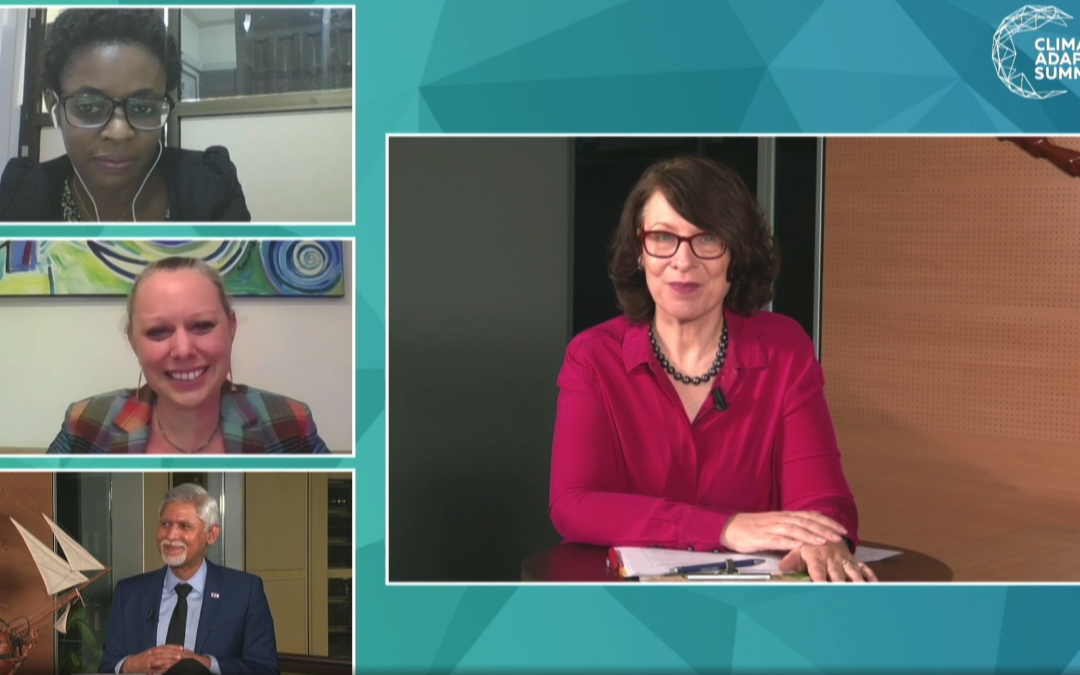
by Claire Doole | Feb 28, 2021 | Blog, Organising events
What is the biggest challenge when organising a virtual event? Technical glitches are high up on the list when I ask this question in my workshop on organising engaging virtual events.
A year on since the pandemic first hit, we are still challenged and aggravated by poor video and sound quality, speakers that fail to connect and lack of time management. At one event I moderated, so many outside lines went down I ended up talking at length to the one guest I fortunately had in the studio. If he hadn’t been with me, we would have just had to go on a break and come back once we reconnected with our speakers.
So, how do you organise a technically glitch free event?
Pre-recordings
I recently moderated the Global Vaccine Immunization and Research Forum (GVIRF) – an event spanning three days over two continents – where all the speakers were pre-recorded. They or proxies were brought back live to answer audience and moderator questions.
If you do pre-record, speakers must keep to time. If you are pre-recording a panel discussion or interview, it must be done “as live” so that it is kept to time. If you go over, you will have to cut something else later in the programme.
Broadcasters give themselves flexibility, editing short and longer versions.
Time management
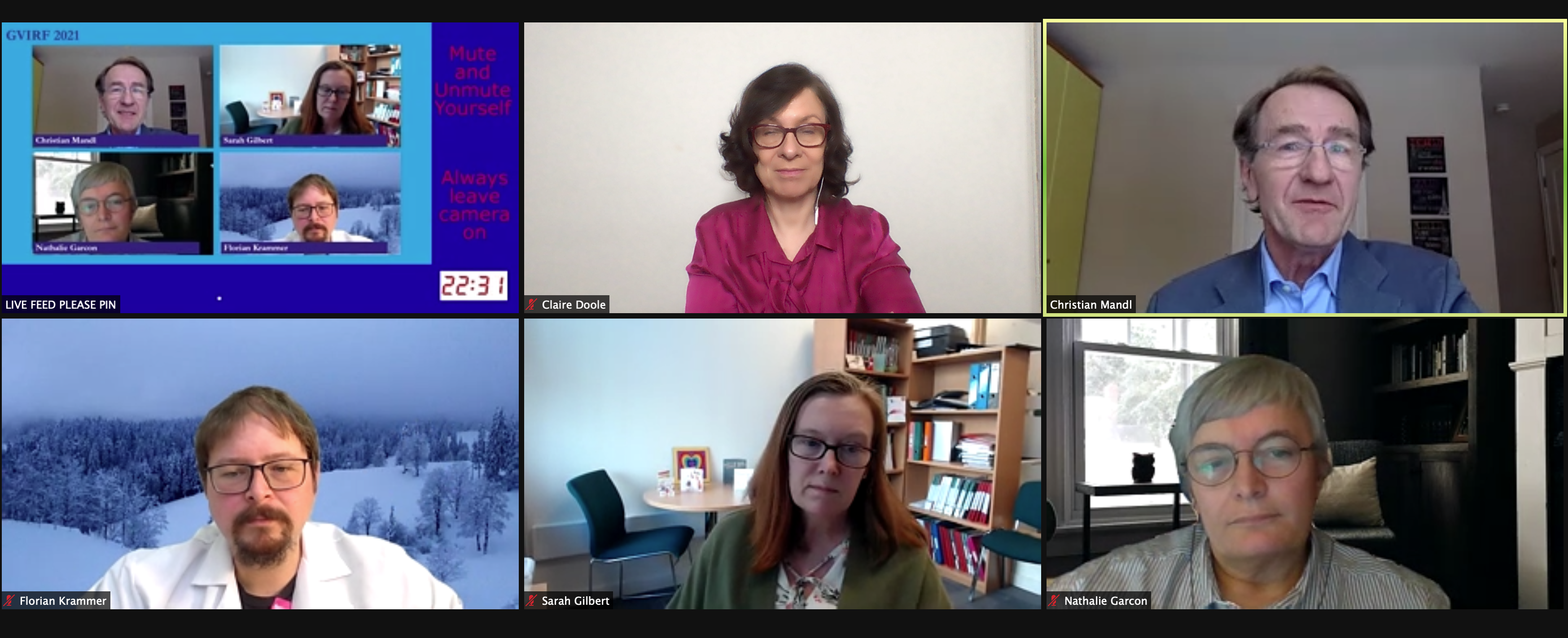
On some platforms, like VMIX, you can integrate a countdown clock so that speakers and the audience see how long is left. At the GVIRF, all of the panel moderators kept to the time that was set.
MC talk back
One of the main jobs of a Master of Ceremonies (MC) is to seamlessly link from one part of the show to the next. It helps if they get a countdown in their earpiece from a studio producer so they know how long is left in a discussion, presentation, pre-recording, video or jingle before they have to speak. At the GVIRF, I downloaded a fantastic mobile phone application called unity comms. I connected with my headphones and could hear the studio producer and talk back to him.
Studio and virtual producers
If you want a seamless and smooth event you need a producer either with you in the studio or in the moderator’s ear virtually.
At one hybrid event I moderated, the producer was in the UK while the event was in Geneva – so I ended up moderating and being the floor manager – guiding guests in and out of the recording area and giving them instructions on what camera to look into. And of course, we had the added complication of social distancing!
Virtual event companies
If you are going to stage an event of more than an hour, you need to have great in-house audiovisual support or engage a virtual event company.
Many events companies have had no option but to work virtually. However, there is a big difference between a company that knows how to do the technical set up in a hotel or conference center and one that understands how to produce virtual events like a TV programme.
At the GVIRF, I worked with Go Vivace an events company in the UK that employs people from the worlds of theatre and broadcasting. Needless to say, the event was as smooth as a BBC programme or a West End production!
Technical rehearsals
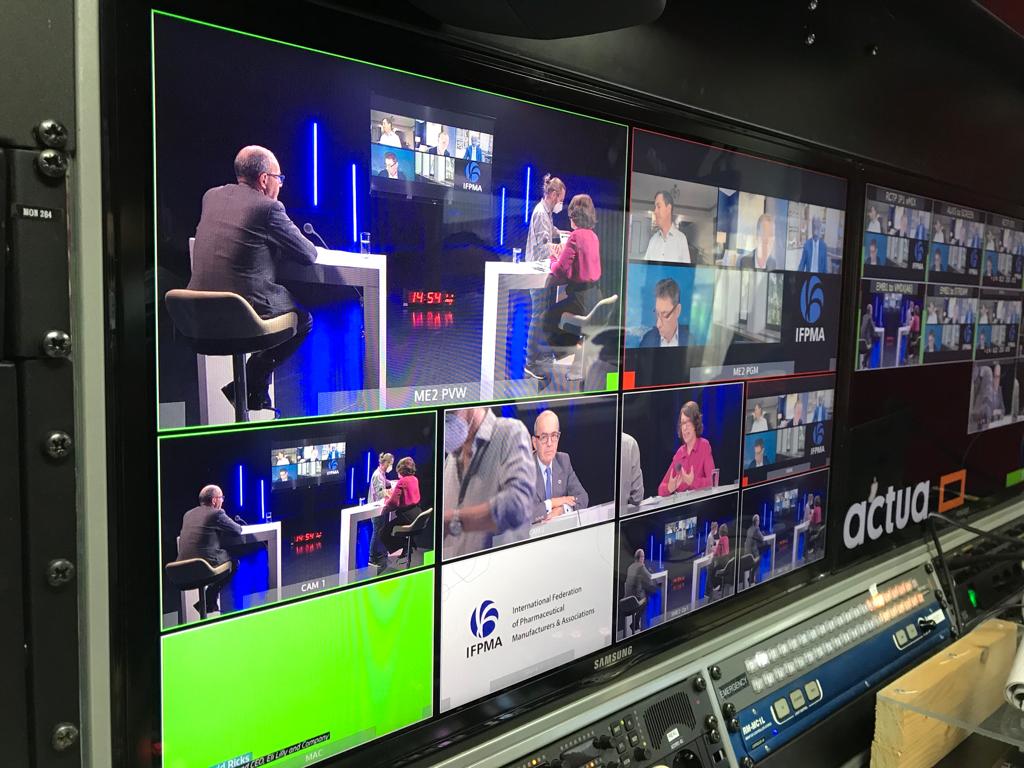
Technical rehearsals with each speaker is required – do not try to cut corners on the budget on this step. It is crucial to check speakers’ background, lighting, and sound before the event.
Also make sure speakers are familiar with the platform – know how to unmute themselves and on some platforms know how to pin themselves to the live broadcast. It is best if they keep their cameras on as if they turn them off the organisers and moderator can easily think they have lost connection.
Even the CEOs of big pharma at the briefings I moderate on COVID 19 vaccines and treatments for IFPMA gave us 15 minutes of their precious time for the technical set up.
Professional moderation
I would say this as a professional panel moderator and conference MC, but you do need someone who can keep calm and carry on whatever technical issues occur.
At a recent event recorded in a client’s office, we lost connection right at the end, between two high-level speakers. Fortunately, the quick-thinking producer switched between one computer and another so we managed to finish the programme smoothly – and on time!
Of course, the real role of an MC is to drive the narrative, connect the dots and energise and interact with the audience – more on that in next months blog!
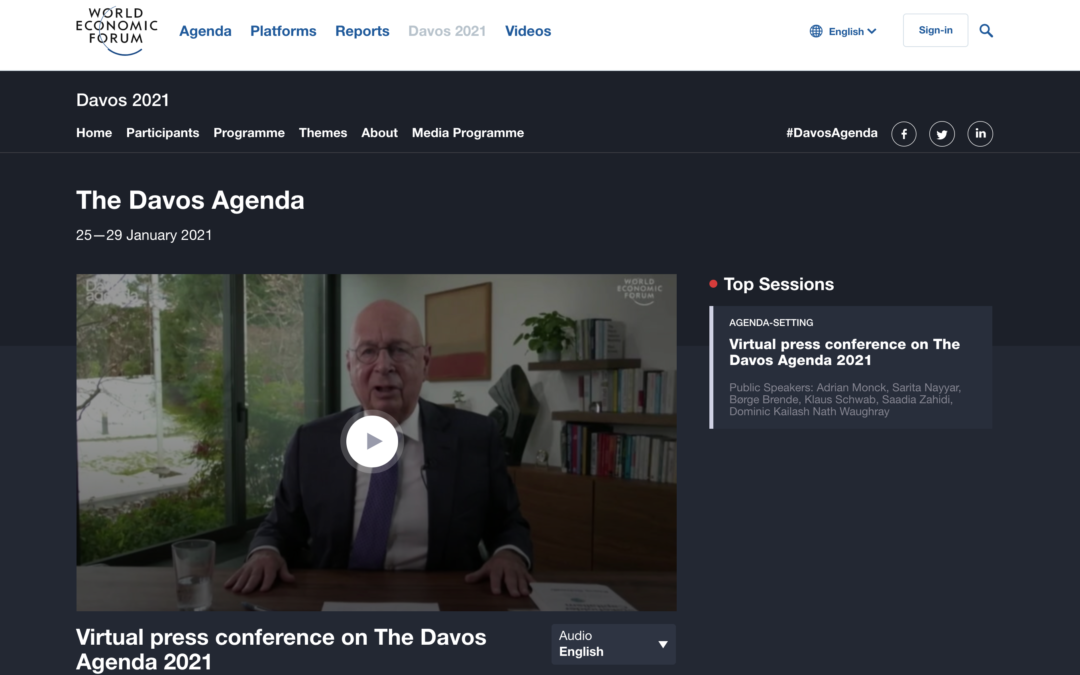
by Claire Doole | Jan 24, 2021 | Blog
This Monday the powerful icons of business, finance and a spattering of civil society will not meet in the Swiss ski resort of Davos for the annual World Economic Forum’s flagship meeting. Instead, they will meet virtually for a meeting billed as the Davos Agenda which will focus on rebuilding trust and shape the principles, policies and partnerships needed for 2021.
I am hoping the virtual meeting will also showcase and shape best practice in terms of organising virtual events. Many companies and organisations have made the shift from physical to digital events – recognising that producing a successful event is like producing a TV programme. As I wrote in my September blog, they must be shorter, more varied, more creative, better moderated and rigorously rehearsed.
But since then, it has become even more obvious that organisers are going to have to up their game if they are to counter the increasing challenges of high attrition rates.
Let me share some anecdotal evidence. Organisers are not getting the numbers as “zoom fatigue” sets in and attendees zoom out. In some instances, there are just too many virtual events. One communications director from an international organisation told me they organised 67 webinars last year – sometimes up to three a week– and had to make sure staff took part to ensure strong numbers.
This year, faced with budget cuts, international organisations and NGOs are scrambling for relevance with donors, which means the pandemic of virtual events shows no sign of slowing. However, they systematically risk forgetting the well-known saying in communications that less is more.
In the corporate world there are also challenges. I hear that some C-suite members are reassessing their attendance at virtual events as the opportunities to network and influence are limited. CEOs go to Davos after all mainly for the deals they can do in the corridors or on the ski slopes!
Other executives have told me that their companies are weighing up the benefits of sending staff to trade fairs as they are not getting the leads, despite the networking opportunities offered on some platforms. They complain about the business model of having to pay extra for networking and that these meetings are just not the same as the chance encounter over coffee! Some companies are even reducing or pulling out from sponsoring virtual events this year due to disappointing attendance figures.
What will change in 2021
Despite the challenges of virtual events, everyone agrees however that they are here to stay. They still offer the 4 C’s of convenience, cost, convening power (greater diversity and reach of speakers and attendees) and climate change impact.
However, given the limitations of the virtual world, the next race is on to replicate as closely as possible the experience of attending a physical conference.
In 2021 we will see two major changes –a move to larger scale hybrid events and the creation of platforms designed to augment reality and provide an enhanced nearly physically presenter user experience for those who’ can’t be on site.
Hybrid events are likely to become the new normal
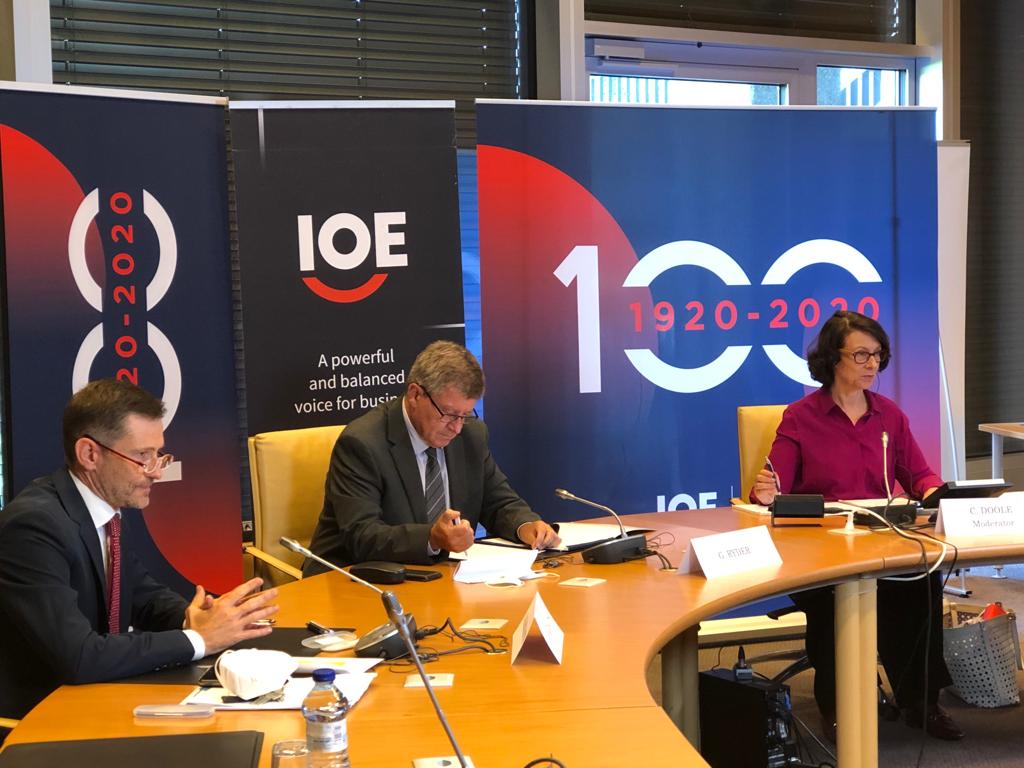
The reasons are obvious – hybrid events are more dynamic as they bring in the dimension of human contact, making discussing more interesting and emotional. Believe me, it is much easier to moderate a discussion when you can gauge body language and interject to drive the conversation forward. It also has the great advantage that even if speakers lose connectivity, you can keep the discussion flowing as you can turn to those with you in the studio!
Already, we are seeing on TV, presenters and guests appear in the studio as well as on screen, and some programmes and sports events now have a socially distanced live audience.
Next generation of platforms
Platforms are working hard to reduce any perceived inequality between those who are physically present and those joining virtually. Platforms like Lunchpool and Vsummits are for example developing networking features, allowing attendees to move from virtual table to virtual table and talk in small groups or one-on-one.
The challenge of hybrid events and using such platforms is cost, which might be prohibitive for those without deep pockets. The company that comes up with an inexpensive model for hybrid events that brings in new technologies from the gaming world and AI will be highly sought after – making such platforms as Zoom pro, MS Teams and Webex relics similar to the first iphone.
Virtual still has a place
Some organisations though will still opt for a fully virtual event for reasons of inclusivity, preferring the level playing field of speakers and audience all coming together virtually.
This week the Davos Agenda meeting should show us what is possible to achieve in the virtual world. I am looking forward though to finding out more about the hybrid event that the World Economic Forum is organising in Singapore in May as this could serve as a model for large scale hybrid events – the next step in our return to the new normal!
Claire moderates in the virtual world and can help you organise an event that attracts and retains your audience’s attention.
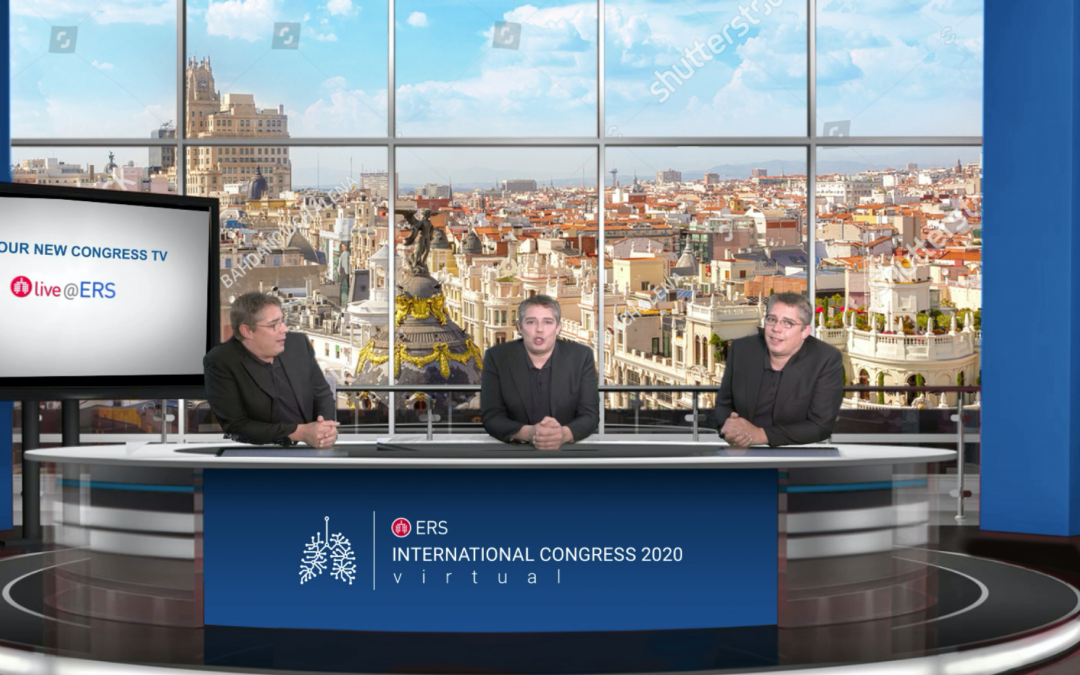
by Claire Doole | Nov 29, 2020 | Blog, Moderating
Many of you are moderating events and panel discussions in the virtual world. If you are an in-house moderator, you have an advantage over someone like myself in that you automatically know the subject area. However, that doesn’t mean that you can “rock up and just have a conversation” in the words of someone I coached recently in how to moderate at a virtual event!
Professional moderators may make it look effortless as they seamlessly transition from one speaker, subject area or segment to another, but it takes a lot of preparation to work out the editorial narrative of an event and the flow of a specific panel discussion.
In many respects in the virtual world, it is even harder for two main reasons:
1) It is more challenging to capture and hold the audience’s attention and;
2) Organizers are packing their events with too many speakers.
If you want to overcome these challenges and be a dynamic virtual moderator, have a look at some of my tips below:
Work with the organisers on event design
I run workshops and act as a consultant to organisations and companies on how to design an entertaining, participatory and insightful event. As an in-house moderator, however, you are well placed to influence the narrative and flow of the event from the start.
• Make sure organisers have made the shift from the real to virtual world and apply the principles of TV programme makers, namely short, varied and creative.
• Advise on the format. Blocks of speakers who present one after each other is overwhelming and potentially tedious for the audience. I have seen programmes where nine speakers make keynote speeches, presentations or remarks with no audience or moderator intervention for the first hour. Even two keynote speeches of 20 minutes each back to back before the audience Q&A is asking a lot of the audience.
• Limit the number of speakers in a panel discussion to no more than four. I have turned down panel discussions where there are seven speakers as it is impossible to generate a lively discussion of views. It goes without saying that it is frustrating for the panelists to be given so little time to get their points across and can certainly lead to information overload for the audience.
Prepare and deliver
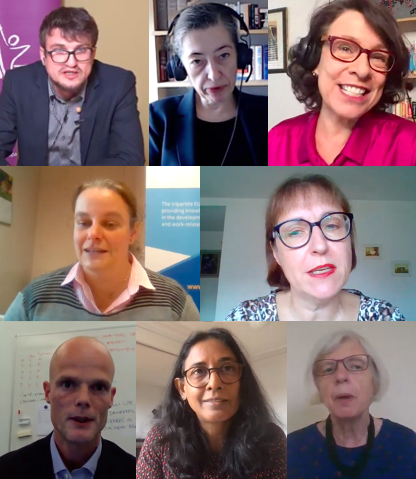
Courtesy of the European Institute of Gender Equality
Virtual events require even more energetic moderation as you have to work harder to hold and retain the audience’s attention. Virtual event organisers are telling me how it is increasingly difficult to attract audiences due to “zoom fatigue”, but also how they see audience figures dive as soon as they lose interest.
• Prepare thoroughly. Whatever the format of your event – presentations, keynote speeches, interviews or panel discussions, you have to prepare by researching the latest findings and talking to your speakers to find out the points they want to make. This applies to in-house moderators just as much as to professional moderators like me.
• Interact with the audience as often as possible and ensure you leave enough time for audience questions throughout and at the end. In the virtual world this is easier as the questions are usually written, reviewed and collated for you unlike in the real world where people can make long rambling remarks or ask unclear questions.
• Manage time. This is a key component as people will leave if a segment or speaker goes on for too long. Similarly, if the event goes over time, you will find that many people have already moved onto their next Zoom call!
Having moderated many virtual and hybrid events in 2020, I know you have to be a more dynamic moderator in this environment. Unfortunately, even if you are naturally charismatic and a subject expert, you can’t just rock up as the moderator I recently coached soon realised!
If you or your co-moderators feel you would benefit from some coaching or group training in how to moderate at a virtual event in 2021, do get in touch.

